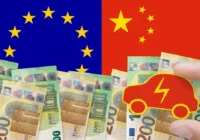US President Donald Trump’s proposed tariff plans are nothing but numbers backed by his ideologies: 20% tariff here, 60% tariff there and a 10% tariff everywhere else. To him, if a country provides undocumented immigrants, like Mexico, that country should have a 25% tax thrown onto all goods imported to the United States. Similarly, countries with vast influence in the American market, such as China, should be shackled down by a 60% tariff.
The proposed tariffs, intended to promote domestic industries and limit commercial relations with foreign bodies, face extreme opposition. Opponents of Trump’s plans outline domestic and foreign economic and workplace dangers.
But what does this mean for you? How does this affect the clothes you buy or the brands you look for?
To understand the implications of these proposals, we first need to understand how a tariff works: The government levies a tax on imports of products from other countries, which it can then use to centralize production and industry in that government’s respective country. Its pitfall, however, comes from its relationship with inflation. For example, when China had to pay a 60% tax on all goods exported to the US, it stopped exporting those goods altogether. Producers must now create goods once made across the ocean domestically, creating inflation.
Because the US has fewer work hours and more guidelines on who is eligible to work, producing a single T-shirt domestically costs more than in China. Thus, when the shirt hits the market, it becomes significantly more expensive to the consumer.
Think about it this way: If it costs more to make, it costs more to buy. If you like paying $6 for a single tomato, you’ll like Trump’s tariff policies.
Trump’s tariff policies: effects on social climate and international relations
Trump beautifully nestled another flaw in his plan between the construction of major factories and a lack of workers to fill those factories. The US is a widely educated country, with about 54% of adults holding some form of a degree. In other countries, where education and opportunities are less accessible, there is a more extensive social acceptance of working in dangerous environments. In some cases, if an underdeveloped government wants to build a manufacturing facility in your neighborhood and assign you to a position there, they can. There isn’t any debate, vote or extensive agendas to plow through.
The construction of major factories in the US under Trump would take well past his presidential reign of power. Even if he were to work around the time crunch, the employment of workers in a highly-educated country would prove an even fiercer foe.
If the US isn’t importing goods from other countries and can’t replicate the speed or quality of foreign production, you, the consumer, are left with strange copies of goods, like vegetables or fruits that aren’t quite right. They become edited down to the exact gene so they can grow in American soil. And, even worse, you’ll spend more on a lower-quality product.
If implemented, Trump’s tariff policies would threaten the integrity of our social climate, workforce, manufacturing industry and relationships with foreign countries. They would also call into question the president’s power. The snowball effect created is so significant that it can’t be fully enumerated. It becomes an incomprehensible, tangled mesh of policy, international relations and inflation. It becomes a shackle for the US and its exporters.
It becomes a $6 tomato.
[Liam Roman and Lee Thompson-Kolar edited this piece.]
The views expressed in this article are the author’s own and do not necessarily reflect Fair Observer’s editorial policy.
Support Fair Observer
We rely on your support for our independence, diversity and quality.
For more than 10 years, Fair Observer has been free, fair and independent. No billionaire owns us, no advertisers control us. We are a reader-supported nonprofit. Unlike many other publications, we keep our content free for readers regardless of where they live or whether they can afford to pay. We have no paywalls and no ads.
In the post-truth era of fake news, echo chambers and filter bubbles, we publish a plurality of perspectives from around the world. Anyone can publish with us, but everyone goes through a rigorous editorial process. So, you get fact-checked, well-reasoned content instead of noise.
We publish 2,500+ voices from 90+ countries. We also conduct education and training programs
on subjects ranging from digital media and journalism to writing and critical thinking. This
doesn’t come cheap. Servers, editors, trainers and web developers cost
money.
Please consider supporting us on a regular basis as a recurring donor or a
sustaining member.
Will you support FO’s journalism?
We rely on your support for our independence, diversity and quality.










Comment